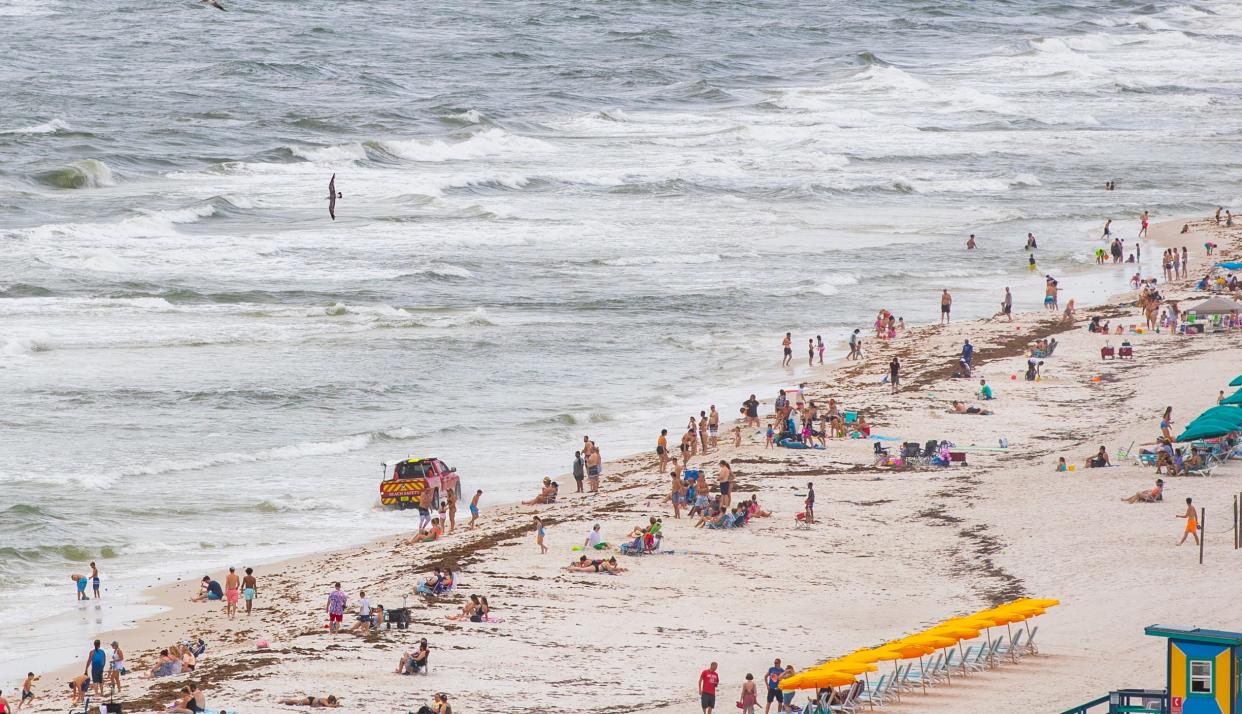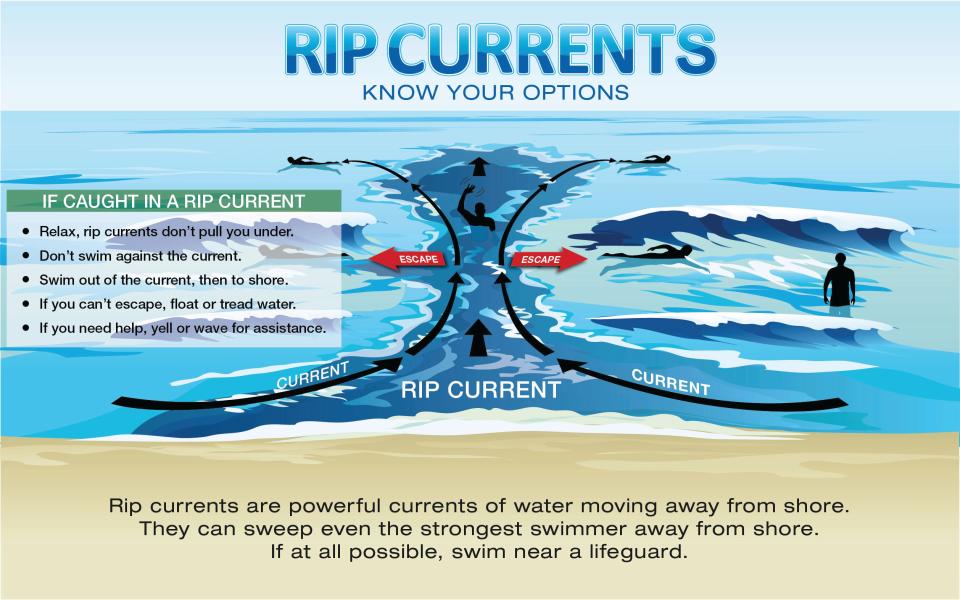How do you get out of a rip current? Some safety tips for beachgoers in Panama City Beach

PANANA CITY BEACH − No matter what surf conditions might look like, there always is some level of risk involved with swimming in the Gulf of Mexico.
In the wake of two local drownings in less than a week, here are some potentially live-saving tips for those enjoying the Gulf in Panama City Beach.
What are rip currents?
Rip currents are fast moving currents created by deeper channels in surrounding sandbars. These channels often run perpendicular to the shoreline and cause water to funnel faster out into deeper waters of the Gulf.
Daryl Paul, beach safety director for Panama City Beach Fire Rescue, said rip currents can vary in strength, depending on how developed the channels are. Rip currents can sometimes be identified from shore where there is a gap in the wave break, meaning the white caps of the break will be less noticeable.
"Rip currents are created by waves that come up and pound the sandbar," Paul said. "They build up, splash over and they create these deep spots. ... As the water recedes back into the Gulf, it finds these deep channels.
"The water will rush toward the deep spot that's in the sandbar that will allow it to go back out to sea."
Sunday's drowning Another tourist drowns in Panama City Beach; second local drowning in less than a week
Thursday's drowning: Former firefighter drowns in Panama City Beach attempting to help distressed swimmers
How can swimmers escape a rip current?
Paul said there are two crucial tips that anyone trapped in a rip current should remember: Do not panic, and swim parallel to shore.
If they do this, they'll often make it to a sandbar where they will be able to stand, Paul said. If they still can't stand, they will at least be in calmer water where it will be easier to make it back to shore.
Because rip currents are caused by deeper channels funneling water, the best thing a struggling beachgoer can do is swim toward the left or right of where they are in distress.
"Once you're in a rip, you may not realize it right away," Paul said. "As soon as you start to realize that you're far from shore, that's usually when people start to panic. ... They start trying to swim straight in, and they can't fight the power of the rip.
"If you simply just turn parallel to shore and swim down current, you will land on a sandbar, and then you can, for most of the time, just stand up and walk right in."

What do the beach safety flags mean?
Beach safety flags are color-coded flags displayed along the coast, and they are used to alert beachgoers of surf conditions.
Common flag colors used in beach-flag warning systems include a green flag for low hazard conditions, a yellow flag for medium hazard conditions, one red flag for high hazard conditions and two red flags for very dangerous conditions.
Panama City Beach never flies green flags because officials say beachgoers should always be cautious anytime they enter the Gulf.
It also is illegal in Panama City Beach to get in the Gulf when double red flags fly. Violators can be fined up to $500, with a 50% discount given to those who pay within 20 days of receiving the ticket.
"We don't fly green flags, but even on a 'green flag day,' there's still going to be rip currents present," Paul said. "There's never no hazard. There's always a rip current present."
Why should beachgoers take this serious?
While those visiting the Gulf might feel it is there right to get in the water, especially after spending a lot of money traveling to the area, it is important for them to always heed the warnings of local lifeguards and the beach flag system.
Paul said many water rescues are for beachgoers who entered the Gulf in an attempt to help a struggling swimmer. The same is true for drownings. Though it is courageous to try to rescue someone, it is something best left to trained professionals.
According to Paul, the best thing someone can do to help a struggling swimmer is to call 911 and wait for local lifeguards to arrive. Both of the recent drownings were by tourists who entered the Gulf during rough conditions to help someone.
"Call 911," Paul said. "Our response times are super fast. We're there. We can be to a scene very quickly. Just call 911. Don't get in the water to make something happen for yourself."
This article originally appeared on The News Herald: Beach safety tips for those visiting the coast of Panama City Beach

